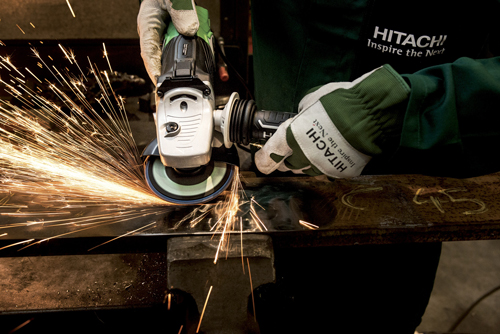1. Common causes that affect the surface finish of casting
1. Raw materials, such as the shape of molding sand, are divided into round square and triangle, the worst is triangle, the gap is very large (if it is resin sand molding, the amount of resin added will be increased, of course, will also increase the amount of gas, if Poor venting is easy to form pores), the best is round sand. In the case of pulverized coal sand, the ratio of sand (strength and humidity of the sand) has a great influence on the appearance. If it is hardened sand of carbon dioxide, it mainly depends on the paint.
2. Material. If the chemical composition of the casting is out of balance, such as low manganese, it is easy to produce looseness and the surface material is coarse.
3. Casting system. If the casting system is unreasonable, it is easy to cause loose castings. In severe cases, the castings cannot be poured, or even complete castings cannot be made. Unreasonable slag holding system will cause slag to enter the cavity and cause slag .
4. Slagging, if the slag quality in the molten iron is not cleaned up or the slag quality is not blocked during casting, causing the slag to run into the cavity, slag holes will inevitably occur.
5. Artificially, due to carelessness, the sand was not cleaned up or fell into the sand when the box was closed, the shape was that the sand was not firm, or the sand ratio was unreasonable, and the sand strength was insufficient. The castings would produce blisters.
6. Excessive sulfur and phosphorus will cause cracks in the castings. These are the matters that must be paid attention to when producing or directing production to ensure the quality of the castings.
The reasons mentioned above are only a small part of them. Due to the ever-changing and profound abnormalities of casting production, the problems encountered during production will often appear, and sometimes a problem can not be found for a long time.
2. Three factors affecting the roughness of gray cast iron
Surface roughness, as an important measure of the surface quality of gray cast iron, not only directly determines the exquisite appearance of gray cast iron parts, but also has a great influence on the equipment quality of the machine and the service life of gray cast iron parts. This article focuses on the analysis of how to improve the surface roughness of gray cast iron parts from the three aspects of machine tools, cutting tools and cutting parameters.
1. The influence of machine tools on the surface roughness of gray cast iron parts
Factors such as poor rigidity of the machine tool, poor spindle accuracy, unstable machine tool fixation, and large matching gaps between various parts of the machine tool will affect the surface roughness of gray cast iron parts.
For example: if the runout accuracy of the machine tool spindle is 0.002mm, that is, the runout of 2 microns, it is theoretically impossible to machine a workpiece with a roughness of less than 0.002mm. Generally, a workpiece with a surface roughness of Ra1.0 can still be processed. Processed out. And gray cast iron itself is a casting, it will not be as easy to process a higher surface roughness like steel parts, coupled with the poor condition of the machine itself, it is more difficult to ensure the surface roughness.
The rigidity of the machine tool is generally set at the factory and cannot be modified. In addition to the rigidity of the machine tool, the spindle gap can also be adjusted to improve the bearing accuracy, etc., so that the gap of the machine tool can be reduced, thereby obtaining a higher surface roughness for gray cast iron parts. Degree is guaranteed to a certain extent.
2. The effect of cutting tools on the surface roughness of gray cast iron parts
Selection of tool materials
When the tool material has a high affinity with the metal molecule of the material to be processed, the material to be processed will easily bond with the tool to generate built-up tumors and scales. Therefore, the surface roughness will be large if the bonding is serious or the friction is serious, and vice versa. . For the same processing of gray cast iron parts, it is difficult for carbide inserts to reach the surface roughness of Ra1.6. Even if it does, the tool life will be greatly reduced. However, the CBN tool made of BNK30 has low friction coefficient of the tool material and excellent high temperature heat. Stability and wear resistance, under the condition that the cutting speed is several times higher than that of cemented carbide, the surface roughness of Ra1.6 can be easily processed. At the same time, the tool life is dozens of times that of cemented carbide tools, and the surface brightness is improved by one. Magnitude.
Selection of tool geometry parameters
Among the tool geometric parameters, the main deflection angle Kr, the secondary deflection angle Kr', and the tool nose arc radius re have a greater influence on the surface roughness. When the primary and secondary declination angles are small, the height of the remaining area of the processed surface is also small, so the surface roughness can be reduced; the smaller the secondary declination angle, the lower the surface roughness, but reducing the secondary declination angle is likely to cause vibration, so reduce The secondary deflection angle should be determined according to the rigidity of the machine tool. The influence of the radius of the tool tip arc on the surface roughness: When the rigidity permits, the increase of the surface roughness will reduce the surface roughness. Increasing the re is a good way to reduce the surface roughness. Therefore, reducing the main deflection angle Kr and the secondary deflection angle Kr' and increasing the radius of the tool tip arc can reduce the height of the residual area, thereby reducing the surface roughness.
The tool engineer said, “It is recommended to choose the arc angle of the tool tip according to the rigidity and roughness requirements of the workpiece. If the rigidity is good, try to choose a large arc angle, which can not only improve the processing efficiency, but also improve the surface finish. ; But when boring or cutting slender shafts or thin-walled parts, because of the poor rigidity of the system, a smaller tip radius is often used."

Tool wear
Tool wear is divided into three stages: initial wear, normal wear and severe wear. When the tool enters the severe wear stage, the wear rate of the flank face of the tool rises sharply, the system tends to become unstable, the vibration increases, and the variation range of the surface roughness also rises sharply.
In the field of gray cast iron, many parts are mass-produced and require high product quality consistency and production efficiency. Therefore, many machining companies choose to change the tool before the tool reaches the third stage of severe wear, which is also called mandatory When changing the tool, the machining enterprise will repeatedly test the tool to determine a critical point, while ensuring the gray cast iron surface roughness requirements and dimensional accuracy, without affecting the overall production efficiency.
4. The influence of cutting parameters on the surface roughness of gray cast iron parts. The different selection of cutting parameters has a greater influence on the surface roughness, and sufficient attention should be paid. Finishing is an important process to ensure the surface roughness of gray cast iron parts. Therefore, when finishing, the cutting parameters should be mainly to ensure the surface roughness of gray cast iron parts, and give consideration to productivity and necessary tool life. The cutting depth for finishing is determined by the margin left after roughing according to the requirements of machining accuracy and surface roughness. Generally, the cutting depth is controlled within 0.5mm. At the same time, under the condition of the rigid conditions of the machine tool, the cutting performance of the tool can be fully exerted, and the gray cast iron parts can be processed at a high speed with a higher cutting speed.
The influence of other factors on the surface roughness of gray cast iron parts
For example, gray cast iron parts have some casting defects, unreasonable cutting fluid selection, and different processing methods will affect the roughness of gray cast iron parts.
The tool engineer said, “In addition to the three major factors of machine tools, tools, and cutting parameters, cutting fluids, gray cast iron parts themselves, processing methods and other factors also have a certain impact on the surface roughness of gray cast iron parts, such as turning, milling, When boring gray cast iron parts, the CBN tool can also process the surface roughness of Ra0.8 under the conditions of the machine tool, cutting parameters and other factors, but it will affect the tool life. The specific needs to be judged according to the actual processing situation ".
5. Summary
In view of the fact that surface roughness has a more direct impact on the performance of machine parts, and the factors that affect surface roughness in actual production come from many aspects, so various factors should be taken into account in all aspects, and the surface roughness should be more economical according to needs. Applicable requirements.
 WeChat scan code
WeChat scan code

support hotline189-1267-9267

mobile phone189-1267-9267
Copyright © 2022 Kunshan Jimda Precision Machinery Co., Ltd. All Rights Reserved. Add:No. 28, Zhisheng Road, Chengbei, Yushan Town, Kunshan City, Jiangsu Province